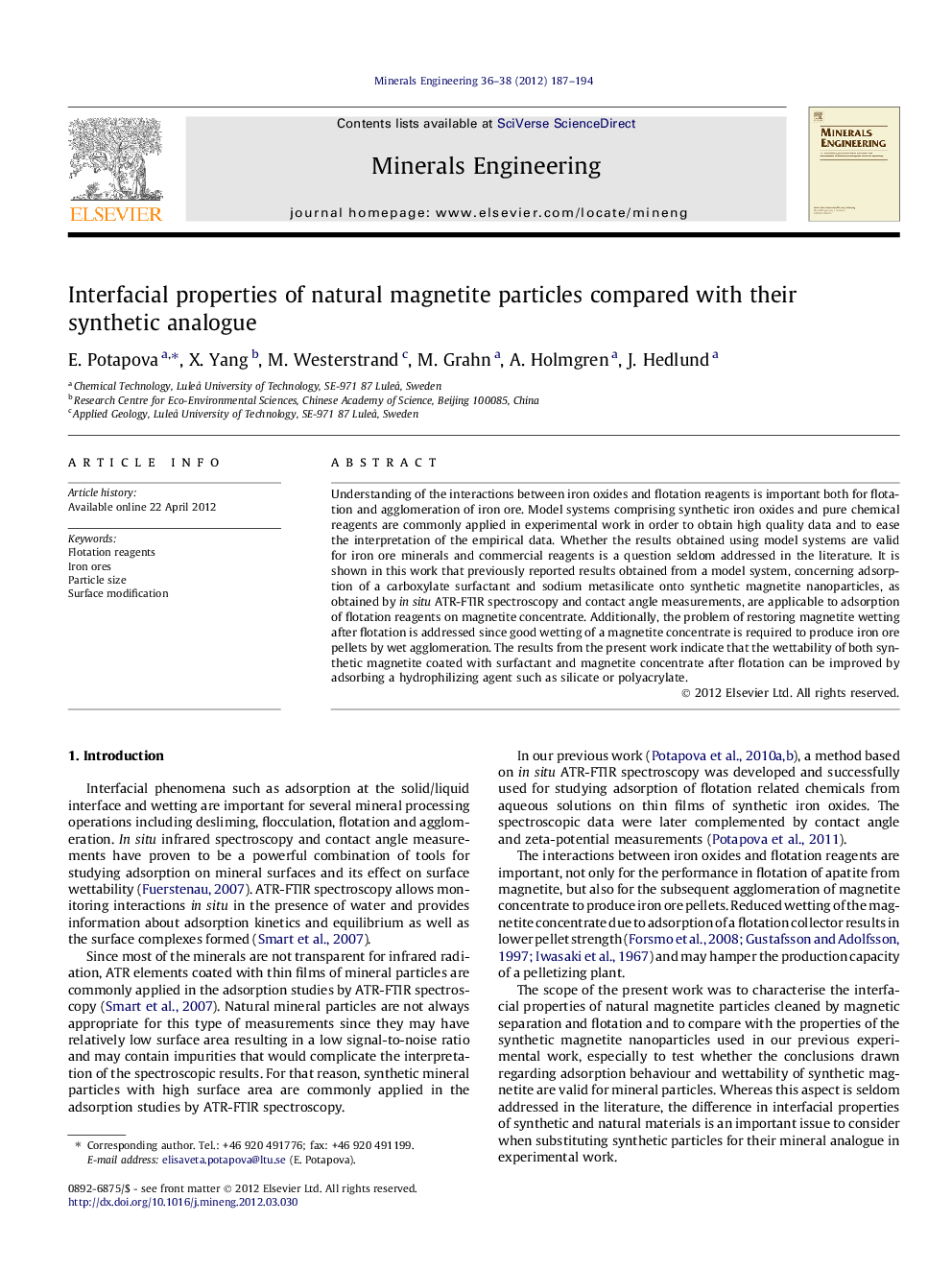| Article ID | Journal | Published Year | Pages | File Type |
|---|---|---|---|---|
| 233537 | Minerals Engineering | 2012 | 8 Pages |
Understanding of the interactions between iron oxides and flotation reagents is important both for flotation and agglomeration of iron ore. Model systems comprising synthetic iron oxides and pure chemical reagents are commonly applied in experimental work in order to obtain high quality data and to ease the interpretation of the empirical data. Whether the results obtained using model systems are valid for iron ore minerals and commercial reagents is a question seldom addressed in the literature. It is shown in this work that previously reported results obtained from a model system, concerning adsorption of a carboxylate surfactant and sodium metasilicate onto synthetic magnetite nanoparticles, as obtained by in situ ATR-FTIR spectroscopy and contact angle measurements, are applicable to adsorption of flotation reagents on magnetite concentrate. Additionally, the problem of restoring magnetite wetting after flotation is addressed since good wetting of a magnetite concentrate is required to produce iron ore pellets by wet agglomeration. The results from the present work indicate that the wettability of both synthetic magnetite coated with surfactant and magnetite concentrate after flotation can be improved by adsorbing a hydrophilizing agent such as silicate or polyacrylate.
Graphical abstractFigure optionsDownload full-size imageDownload as PowerPoint slideHighlights► Synthetic and mineral magnetite exhibited similar adsorption and wetting behaviour. ► Flotation collector adsorption on magnetite increased in the presence of calcium ions. ► Wetting of magnetite was reduced by adsorbed collector species. ► Wetting of magnetite could be restored by treatment with water glass or polyacrylate. ► Better wetting of the magnetite concentrate would facilitate wet agglomeration of iron ore.
